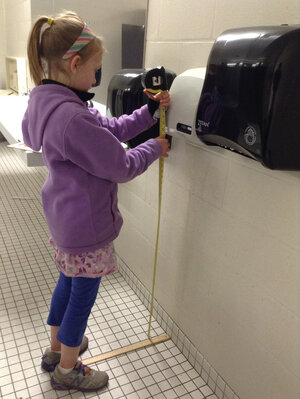 Hand dryers are ubiquitous in public restrooms, but according to research recently published in the Canadian journal Paediatrics & Child Health, the noise they make may be harmful to children’s ears.
Hand dryers are ubiquitous in public restrooms, but according to research recently published in the Canadian journal Paediatrics & Child Health, the noise they make may be harmful to children’s ears.
And the study’s author can speak from personal experience.
“Sometimes after using hand dryers my ears would start ringing,” 13-year-old Nora Keegan from Calgary, Canada, told NPR in a recent interview. “I also noticed that children would not want to use hand dryers, and they’d be covering their ears.”
So when she was 9, Keegan decided to test the volume of hand dryers and find out if they were detrimental to children’s hearing. Keegan’s research confirming her hypothesis was published in June.
“Hand dryers are actually really, really loud, and especially at children’s heights since they’re close to where the air comes out,” says Keegan, noting that children’s ears are more sensitive.
For the study, which was conducted between 2015 and 2017, Keegan visited more than 40 public washrooms in Alberta, Canada. She used a professional decibel-meter to measure sound levels of hand dryers from various heights and distances.
Her introduction notes that previous research found hand dryers may operate at levels that are dangerous even for adults, but that there was no research on the potential effects on children’s more sensitive hearing. Keegan notes that Canadian regulations prohibit the sale of toys above 100 decibels.
Keegan used a decibel meter to test 44 hand dryers in public restrooms of places where kids frequent, such as schools, libraries, shopping and restaurants. She collected data over the course of 14 months, starting when she was nine years old.
 To get a thorough sampling, she tested each dryer in 20 different ways. Each test involved a different combination of heights and distances from the wall, and with or without hands in the air stream. The heights included the average height of a 3-year-old child’s ear canal and an adult man and woman’s ear canal. The tests were also done when there was no background noise such as toilets flushing or people talking.
To get a thorough sampling, she tested each dryer in 20 different ways. Each test involved a different combination of heights and distances from the wall, and with or without hands in the air stream. The heights included the average height of a 3-year-old child’s ear canal and an adult man and woman’s ear canal. The tests were also done when there was no background noise such as toilets flushing or people talking.
She discovered that Xlerator hand dryers and two types of Dyson Airblade hand dryers posed the greatest threats to children’s hearing. These types all exceed 100 decibels — a volume that can lead to “learning disabilities, attention difficulties, and ruptured ear drums,” according to Keegan’s study.
At that level, hearing loss is possible after about 15 minutes, according to the National Institute on Deafness and Other Communication Disorders. In Canada, toys that emit sounds over that level are banned outright. The U.S. Environmental Protection Agency says 85 decibels is the level that can be dangerous for hearing.
“My loudest measurement was 121 decibels from a Dyson Airblade model,” Keegan says. “And this is not good because Health Canada doesn’t allow toys for children to be sold over 100 decibels, as they know that they can damage children’s hearing.”
Her research also found that while some models operated at low sound levels, they were louder at a child’s ear height than an adult’s ear height.
For several reasons, children experience sound differently from adults.
“Their ears are smaller, which means that sounds are louder going in, similar to how if you go into a restroom, your voice is going to be echoing and louder than if you go into a gymnasium,” explains Frank Wartinger, an audiologist at Children’s Hospital of Philadelphia.
